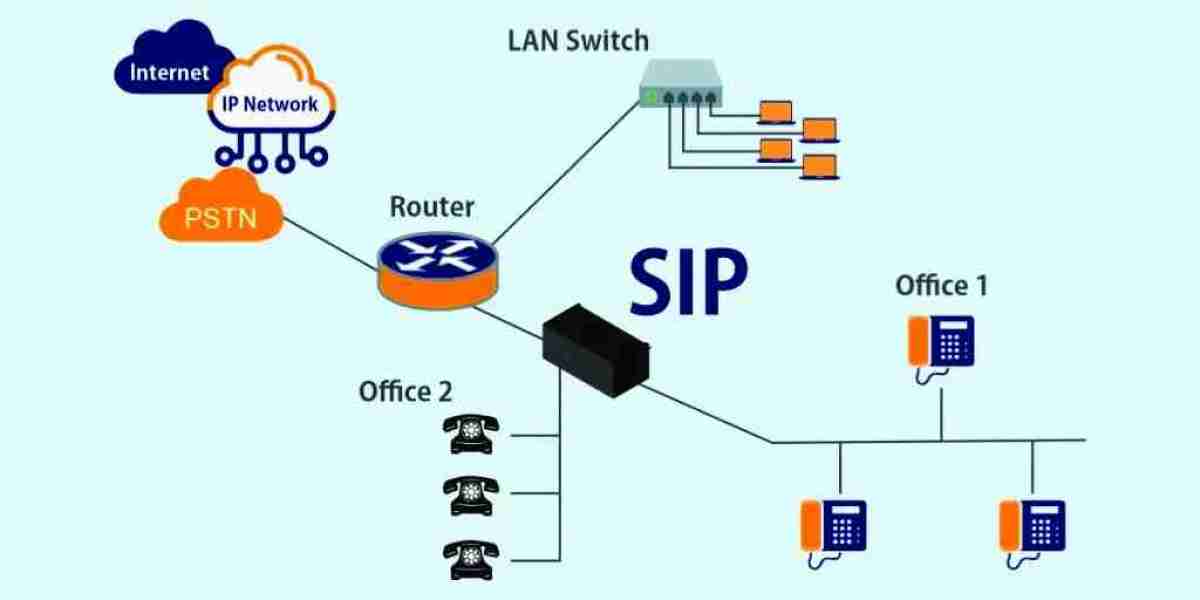In today's rapidly evolving business landscape, communication is key. With the rise of digital technologies, traditional phone lines are becoming obsolete, paving the way for more advanced solutions like Voice over Internet Protocol (VoIP) and Session Initiation Protocol (SIP) trunking. But which one is the right fit for your business?
Understanding VoIP and SIP Trunking
VoIP: VoIP allows users to make phone calls using the internet instead of traditional phone lines. It converts voice signals into digital data packets and transmits them over the internet to the recipient. VoIP systems can be hosted on-site or in the cloud, offering flexibility and scalability for businesses of all sizes.
SIP Trunking: SIP trunking is a communication protocol that enables businesses to make and receive voice calls over the internet using Session Initiation Protocol (SIP). Instead of traditional phone lines, SIP trunking utilizes an internet connection to establish connections between the business's Private Branch Exchange (PBX) system and the Public Switched Telephone Network (PSTN).
Cost Considerations
VoIP: One of the main advantages of VoIP is its cost-effectiveness. Since calls are transmitted over the internet, businesses can significantly reduce their phone bills, especially for long-distance and international calls. Additionally, VoIP systems often have lower upfront costs and maintenance expenses compared to traditional phone systems.
SIP Trunking: SIP trunking can also lead to cost savings for businesses, particularly for those with high call volumes. By consolidating voice and data traffic over a single internet connection, businesses can eliminate the need for multiple phone lines, resulting in lower monthly expenses. However, businesses may incur additional costs for SIP trunking setup and configuration.
Scalability and Flexibility
VoIP: VoIP systems offer scalability and flexibility, allowing businesses to easily add or remove users as needed without the constraints of physical phone lines. With cloud-based VoIP solutions, employees can make and receive calls from anywhere with an internet connection, enabling remote work and enhancing productivity.
SIP Trunking: Similarly, SIP trunking provides scalability and flexibility for businesses, allowing them to adjust their communication resources based on demand. Since SIP trunking relies on an internet connection, businesses can seamlessly scale their voice services without the need for additional hardware.
Reliability and Quality of Service
VoIP: While VoIP offers many benefits, its reliance on the internet can sometimes lead to quality and reliability issues, particularly if the internet connection is unstable or experiencing high traffic. Businesses may experience dropped calls, latency, or poor call quality during peak usage times.
SIP Trunking: SIP trunking typically offers higher reliability and quality of service compared to VoIP. Since SIP trunking uses dedicated connections between the PBX system and the PSTN, businesses can expect consistent call quality and uptime, even during times of high internet traffic.
Integration with Existing Systems
VoIP: VoIP systems are highly compatible with existing communication infrastructure, making them easy to integrate with other business applications such as email, CRM software, and unified communications platforms. This integration enhances collaboration and streamlines business processes.
SIP Trunking: Similarly, SIP trunking can seamlessly integrate with existing PBX systems, allowing businesses to leverage their current investments in hardware and software. By connecting the PBX system to the internet via SIP trunking, businesses can modernize their communication infrastructure without the need for a complete overhaul.
Choosing the Right Solution
When deciding between VoIP and SIP trunking for your business, consider your specific communication needs, budget, and infrastructure. If cost-effectiveness, scalability, and flexibility are top priorities, VoIP may be the ideal choice. However, if reliability, call quality, and seamless integration with existing systems are paramount, SIP trunking could be the better option.
Regardless of your choice, partnering with reputable SIP providers for home use is essential to ensure reliable service and ongoing support. These providers offer tailored solutions for businesses of all sizes, helping you optimize your communication infrastructure for maximum efficiency and productivity.
In conclusion, both VoIP and SIP trunking offer unique advantages and considerations for businesses seeking to modernize their communication systems. By carefully evaluating your requirements and partnering with the right provider, you can choose the solution that best fits your business needs and sets you up for success in today's digital age.



